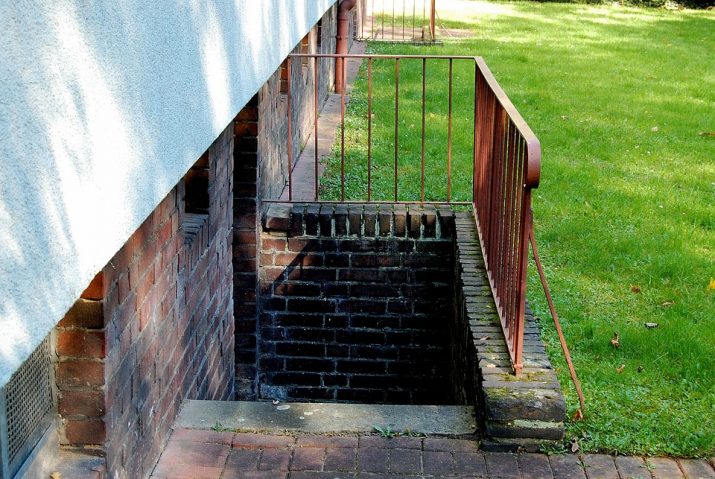How To Keep Mold Out of Your Basement
By Jim Thompson
January 17, 2019 • Fact checked by Dumb Little Man

The adverse effects of mold are hard to overlook. From unpleasant appearance to respiratory problems and lethal consequences, mold can make our lives truly miserable.
Even though it’s clearly not desirable, many people do everything necessary to help the mold grow. They create a highly favorable environment for it to appear and stay for as long as possible.
One of the best places for the mold to grow is the basement. Moisture, high humidity, darkness, and lack of UV light allow mold to thrive. Sometimes, members of the household don’t even notice it growing until they start experiencing health symptoms or unpleasant “musty” odors emanating from the basement. Once that happens, it means mold has taken your home hostage, and you’ll have a tough time expelling it.
So, how do you remove mold from the basement? Let’s find out.
Why Does Mold Form?
Before planning our war strategy, let’s learn as much as possible about the enemy. What leads to mold formation in the first place?
Mold isn’t picky. It only needs a few things to start thriving. And most basements have got them all.
Mold Spores
Mold doesn’t appear out of anywhere. You can bring mold spores with you from a friend’s house or the office. They are minuscule, so you’d never know you were the carrier.
Nutrition source
Mold needs something to “eat”. Any place in your home has a little organic material, such as drywall, cotton, and wood. Essentially, your whole house is the mold’s dining table.
Lack of Light
Mold hates sunshine because UV light is its enemy. Since basements are mostly dark with a little source of sunshine, mold has a grand time establishing its kingdom.
Warmth
Mold hates cold temperatures, just like people do. That’s why it always grows in places where it’s warm and pleasant. Mold can’t reproduce at freezing temperatures. However, spores don’t die when frozen. They just wait for some warmth to come. As soon as the temperatures go up, mold begins growing again.
Oxygen
Mold needs air to grow. However, it doesn’t need as much oxygen as we do. It can thrive at as little as 0.5% oxygen concentration. So, even if your basement seems kind of stuffy to you, mold doesn’t experience any discomfort.
Moisture
Mold requires moisture to grow. It doesn’t necessarily have to be a leak. High humidity creates favorable conditions for the mold to enjoy its stay in your basement. The higher the humidity is, the more moisture the air holds and the more water settles on the surfaces. Such conditions give mold an excellent environment to grow.
Time
Mold grows fast. If the conditions are right, it only takes about 24 hours for the mold spores to start turning into an unsightly cluster we can see, smell, and even feel.
Top Tips in Removing Molds
Now that we know our enemy, we can work out ways to fight it. Let’s take it one step at a time.
Battling Mold Spores In The Air
Mold spores are so minuscule that you have no way of knowing whether you are carrying them around with you. Your pet can bring it from the street or a gust of air can help the spores fly in through your windows.
Since you can’t prevent the mold spores from coming inside, you need to deal with them once they arrive. Mold spores don’t grow into mold unless you offer them favorable conditions to do so. If it’s impossible to battle the conditions, battle the spores.
One of the best weapons to deal with mold spores in the air is by using a specifically designed air purifier for mold spores with a HEPA filter. HEPA filters are designed to capture particles of 0.3 microns in diameter. Such filters trap even the tiniest mold spores.
Another tool for battling mold spores is a vacuum cleaner with a HEPA filter. It collects the mold spores from the surfaces if they already managed to settle.
Not Allowing Mold Spores To Turn Into Mold
While an air purifier takes mold spores out of the air, it’s up to you to minimize the chance of the actual mold growth by removing as many favorable conditions as possible.
Nutrition source– While you can’t remove cotton and wood from your basement, you can deal with an organic matter such as dead skin cells and food. Regular cleaning can do the trick.
Lack of light – Allow the sunshine inside your basement as often as possible. Invest in a UV lamp or an air purifier with a UV light.
Warmth– Try to keep the temperature in the basement as cool as possible. The cooler the air, the lower the humidity. You can invest in a smart thermostat to set different temperatures in different rooms.
Moisture– Check the basement for leaks and consider buying a dehumidifier to keep the humidity as low as possible.
Oxygen and Time– There is little you can do about these two, so focus on the others.
Conclusion
Basements and mold often go hand in hand because people themselves create the perfect environment for the mold to grow. It’s up to you to make an effort and show the mold that your home is not the place for its reign.



